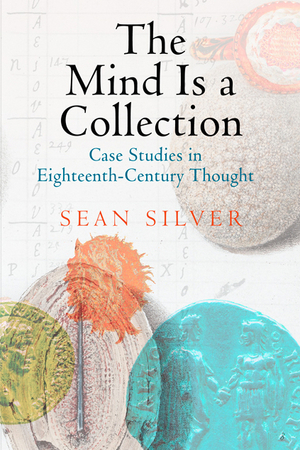An exhibit catalogue of this museum has been published by the University of Pennsylvania Press. Part of their "material texts" series, it discusses a selection of objects in the museum. Book and museum together make a case for "mind" as an effect of certain kinds of environments, and for philosophies of mind as embedded in material practices.
The Mind is a Collection (Penn, 2015)
ABSTRACT:
John Locke described the mind as a cabinet; Robert Hooke called it a repository; Joseph Addison imagined a drawer of medals. Each of these philosophers was an avid collector and curator of books, coins, and cultural artifacts. It is therefore no coincidence that when they wrote about the mental work of reason and imagination, they modeled their powers of intellect in terms of collecting, cataloging, and classification.
The Mind Is a Collection approaches seventeenth- and eighteenth-century metaphors of the mind from a material point of view. Each of the book's six chapters is organized as a series of linked exhibits that speak to a single aspect of Enlightenment philosophies of mind. From his first chapter, on metaphor, to the last one, on dispossession, Sean Silver looks at ways that abstract theories referred to cognitive ecologies—systems crafted to enable certain kinds of thinking, such as libraries, workshops, notebooks, collections, and gardens. In doing so, he demonstrates the crossings-over of material into ideal, ideal into material, and the ways in which an idea might repeatedly turn up in an object, or a range of objects might repeatedly stand for an idea. A brief conclusion examines the afterlife of the metaphor of mind as collection, as it turns up in present-day cognitive studies. Modern cognitive theory has been applied to the microcomputer, and while the object is new, the habit is as old as the Enlightenment.
By examining lived environments and embodied habits from 1660 to 1800, Silver demonstrates that the philosophical dualism that separated mind from body and idea from thing was inextricably established through active engagement with crafted ecologies.
RECENT NEWS: The catalogue for The Mind Is a Collection has been awarded this year's Kenshur Prize for "an outstanding monograph of interest to eighteenth-century scholars." It had previously been shortlisted for the British Society of Literature and Science 2015 Book Prize.
Reviews:
Christina Lupton, "The Searcher of Patterns and the Keeper of Things," Los Angeles Review of Books (6 March, 2016).
Jess Keiser, a review essay in Eighteenth-Century Studies 49.4 (2016): 539-41.
Amy Haslanger reviews the museum for BSECS (August, 2016).
Paddy Bullard, his review for Review of English Studies (September, 2016).
Karin Kukkonen for The Scriblerian, 2018.
Judith Pascoe's for The Journal of British Studies.
Alexander Dick's for Modern Language Review.
Thomas Manganaro for Configurations.
Katy Barrett's review for West 86th.
Marcus Tomalin's review for ECF.
Melina Moe's for Restoration.
Collin Jennings's dual review for ECF.
Ala Alryes has reviewed MIAC for The Shandean (2017).
MIAC features in Jenny Davidson's 2016 review of C18 scholarship for SEL, and again in the 2017 review by George Haggerty.
Among the generous responses at the Kenshur Prize symposium on MIAC were Jason Baird Jackson's "Reflections" (Sept, 2016).
And some praise:
"Sean Silver is inspired by Bruno Latour to turn taxonomies into something more mobile and unexpected, representations of knowledge on the one hand and notices of privacy on the other. But it is Latour with a spice of Shandeism, where grand projects can end up as blank paper, and noble conceptions as wind and water. Silver shows how risky his kind of network can be." —Jonathan Lamb, Vanderbilt University
"The Mind Is a Collection is brilliant, distinguished, thoughtful, impressively researched, and highly learned." —Blakey Vermeule, Stanford University
